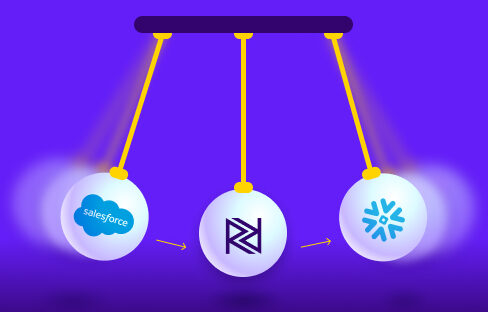In 2021, data management and data operations will change significantly, and this will inevitably impact data teams. So what will data teams look like in 2021?
Each organization is different, but all must contend with the same short-term and long-term trends. In our latest eBook – Data Management 2021: Trends, Technologies, Teams, and Organizations – we analyzed how data teams will operate in the new data landscape.
Read on to find out what data teams will look like in 2021.
Data Teams in 2021: Everything You Need to Know
Despite an ever-growing importance, “data team” still lacks a clear definition. In some companies, the data team is formally centralized, with data engineers, data scientists, and data analysts all operating as a single unit. This unit is usually overseen by a Chief Data Officer, Chief Technology Officer, or a similar executive.
But in other companies, data analysts and other data professionals are embedded across different teams to facilitate the business objectives of each group.
Data Technology of the Past
As 2021 progresses, data teams will move closer to hybrid centralized/embedded models to meet the growing demand for data and analytics. The main driver of these restructurings will be the same culprit as always: technology.
This is why there’s still no formal definition of “data team” in 2021. Technology keeps disrupting the roles and responsibilities of these teams and the personnel attached to them. But to understand where data teams are headed, we must first look back to the not-so-distant but oh-so-different past.
Until just a few years ago, data teams spent most of their time building and maintaining data systems. Data teams relied on difficult-to-scale on-premise databases and data warehouses. These inflexible systems required data teams to manually construct and maintain data infrastructure.
And in terms of data management, data teams used in-house or cumbersome ETL tools with low scalability. Data teams spent much time hard coding components, such data pipelines, and performing system maintenance.
Cloud Technology
But recent advancements in cloud technology have radically altered this paradigm. In just the past few years, intuitive, infinitely scalable cloud data warehouses supplanted on-premise DWHs.
New business intelligence platforms, based on “augmented analytics”, enabled teams to develop incisive reports and dashboards with ease.
And “no-code” ELT platforms allowed data teams to automate data integration, from extraction to transformation, without requiring hard coding or technical gruntwork.
These new advancements have altered data teams in a number of ways, and these trends will continue in 2021. In terms of data management, the appearance of “no-code” ELT tools and ADM platforms has fundamentally changed technical roles, such as data engineer.
Just a few years earlier, data engineers spent their hours manually building data pipelines, performing migrations, and executing data transformations. But in 2021 and beyond, the rise of these SaaS data management solutions means data engineers can automate all of these technical tasks and focus on more cerebral projects.
SaaS ELT
For a data engineer, these cerebral projects harness his or her real expertise, generating a more optimal use of his or her time. For instance, he or she could develop advanced analytics, using machine learning and AI, based on the enormous volume of data inside the cloud data warehouse.
This project, in turn, impacts everybody on the data team. Data scientists, data analysts, and other team members, can use those advanced analytics to develop sharper and more robust insights.
In fact, no-code SaaS ELT solutions allow other members of the data team to bypass data engineers entirely. Data scientists or data analysts who need to add new data sources can simply do it themselves, without having to code or manipulate the backend.
This allows data scientists to start key projects such as data curation and matching algorithms without delay, while data analysts can produce more detailed reports, and at a faster rate. This improved efficiency helps companies achieve a significant boost in ROI.
But in 2021, the power of SaaS ELT will transfer outside of data teams, as well. By erasing the need for technical know-how, these data management platforms will extend functionality to non-experts in other departments.
The marketing team, finance team, sales team, or any other team, can be trained to leverage the power of big data in their daily operations with the right data management solution.
This will blur the line between “centralized vs. embedded” data teams, allowing companies to hybridize their data operations without necessarily having to hire more expert personnel.
Data Job Growth
As 2021 progresses, data teams will begin to adopt less of a nuts-and-bolts approach to data management, and more of a big-picture, insight-driven focus on data strategy.
Employers are already factoring these trends into hiring decisions. Consider the data positions that are predicted to grow the most, by percentage, throughout 2021:
- Data Product Manager – 33%
- Data Steward – 33%
- Data Architect – 25%
- Data Modeler – 19%
As technical grunt work continues to diminish, data teams will focus more on cerebral tasks and interpreting insights. Tasks that used to take significant time, such as building API connectors, will be eliminated entirely.
Meanwhile, outside teams will harness the power of data management to meet their own objectives. This is what 2021 has in store for data teams, however they define themselves.
Download our latest eBook – Data Management in 2021: Trends, Technologies, Teams, and Organizations – for a full overview of what data teams will look like in 2021!
And use the eBook as your go-to bible for data management in 2021.
Data Management in 2021: Trends, Technologies, Teams, and Organizations
Minimize the firefighting. Maximize ROI on pipelines.





